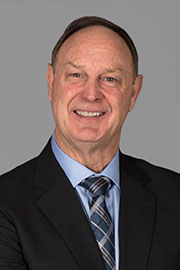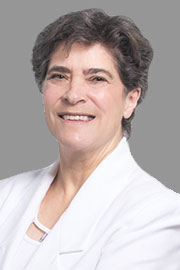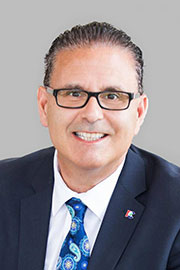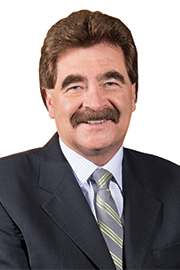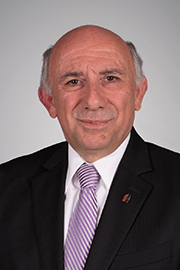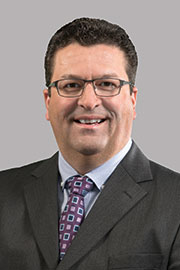- Aug/11/22 9:30:00 a.m.
- Re: Bill 2
Next I’ll recognize the member for Bruce–Grey–Owen Sound.
- Hear!
- Rabble!
- Aug/11/22 9:40:00 a.m.
- Re: Bill 2
First, I want to say it’s an honour to be able to share my time with the Minister of Finance and the member from Bruce–Grey–Owen Sound. I’m on a great, great team.
It’s a pleasure to be able to use this time to be able to speak about our government’s Plan to Build Act. We brought this legislation forward as one of our first orders of business, because we have already hit the ground running, and are well under way in implementing our 2022 Ontario Budget: Ontario’s Plan to Build.
This is our plan to rebuild Ontario’s economy; our plan to keep costs down for Ontario families and put more money back in their pockets; our plan to work for Ontario’s workers and deliver better jobs and bigger paycheques; our plan to build highways, transit and key infrastructure, and support the building of housing right across our province; and our plan to keep Ontario open, today and in the future, by investing in home care, long-term care and our health care workforce.
“Build”: Mr. Speaker, that word appears in our 2022 budget more than 300 times, and it appears in the legislation we are discussing today, whether we’re talking about getting shovels in the ground to build highways, bridges, subways and schools; building new hospitals and long-term-care beds, and recruiting nurses, doctors and personal support workers; making investments in the auto sector and in critical minerals to rebuild Ontario’s economy; or to build a province that works for workers while keeping costs down for families. Our government has a plan to build, and we have a plan to get it done.
Our government has a plan to build prosperity everywhere, for everyone, for every person and every region across this great province. Our plan will build prosperity for all. For too long, employment growth and opportunities have been concentrated in Ontario’s largest metropolitan areas. For example, our government doesn’t think it’s fair for government organizations to be centralized in one location, typically Toronto. Too many regions have not shared in the prosperity in this province. Every small city, town and village in Ontario has something to offer, and the Ontario government has a plan to make sure everyone can contribute to making this province great.
That’s why our 2022 budget includes a Community Jobs Initiative. Through this initiative, the government is working to bring jobs and provincial agencies to communities across Ontario to spur economic growth throughout the province. This begins with exploring the relocation of the Workplace Safety and Insurance Board headquarters to London, Ontario. The Workplace Safety and Insurance Act of 1997 currently requires the main offices to be located in Toronto. Our Plan to Build Act would, if passed, see this section repealed, because we don’t believe that only one urban centre should have access to these good jobs and community benefits that they can bring.
Mr. Speaker, another way to build is helping to bring prosperity in all corners of the province through our Regional Opportunities Investment Tax Credit. It is a tax credit that was introduced in March 2020 to help lower the cost for businesses seeking to expand and grow in areas of the province where employment growth has been slower than the provincial average. It supports corporations that build, renovate or purchase eligible commercial or industrial buildings in qualifying areas in Ontario. It provides an incentive to bring jobs and growth to these communities because, as I noted earlier, we believe communities across the province deserve access and opportunity to build and succeed. Members may recall that in the 2021 budget we temporarily doubled this tax credit rate from 10% to 20% until the end of 2022. We did this to provide additional support for businesses in light of the COVID-19 pandemic. This enhancement increased the available tax credit support for regional investment from a maximum of $45,000 to a maximum of $90,000 in a year. Through the legislation we are discussing today, our government is proposing to extend the temporary enhancement of the Regional Opportunities Investment Tax Credit until the end of 2023. This would give businesses more time to make use of this enhanced support, more time to invest in Ontario’s communities, more time to rebuild our economy.
By extending the limited enhancement to the Regional Opportunities Investment Tax Credit, Ontario would be investing an additional $40 million, resulting in a total estimated tax credit support of over $280 million from 2020-21 to 2024-25. As we move forward with our plan to rebuild Ontario’s economy, this measure would help bring growth and prosperity to Ontario’s diverse communities. From Cochrane to Kenora, from Thunder Bay to Timiskaming, from Manitoulin to Perth, the Regional Opportunities Investment Tax Credit enhancement would support job creation and growth throughout this great province.
Mr. Speaker, our plan to build also includes one of the most ambitious capital plans in our province’s history. It includes planned investments over the next 10 years totalling $158.8 billion, including $20 billion in 2022-23. This plan is getting shovels in the ground to build highways, hospitals, transit and other critical assets, creating jobs and laying the foundation for a stronger Ontario. It includes $25.1 billion over the next 10 years to support the planning and construction of highway expansion and rehabilitation projects across the province, cutting commute times so the people of Ontario can get to work faster and to their families faster.
Additionally, these critical projects will support job creation and drive economic growth. For example, we are moving ahead with building the Highway 413, a new 400-series highway and transit corridor across Halton, Peel and York regions. This highway will support the movement of goods and services across the province, saving drivers up to 30 minutes on their commute, as well as being a relief to the most congested area in North America.
Our government has taken another step towards getting shovels in the ground to build the Bradford Bypass, a new four-lane highway connecting the 400 in Simcoe county and Highway 404 in York region. This critical infrastructure will ease gridlock in the greater Golden Horseshoe area by taking pressure off an increasingly congested Highway 400 and existing east-west local roads. It is estimated that commuters using the Bradford Bypass will save up to 35 minutes in travel time per trip compared to existing routes on local roads.
Our work on expanding Highway 401, an important economic corridor, better connecting eastern Ontario and eastern Canada: This work includes three bridge replacements in Oshawa to facilitate future widening between Brock Road and Pickering through to Highways 35 and 115; bridge replacements in Port Hope to facilitate future widening between Highways 35 and 115 to Belleville; and acquiring land to facilitate future widening of Highway 401 through Belleville and Brockville.
Mr. Speaker, I also want to provide some examples of the highway rehabilitation and expansion initiatives that will help decrease gridlock and increase productivity for the people of Ontario.
In the north, we are widening from two to four lanes on Highways 11/17 from Highway 587 east to Pearl Lake, and this includes new Pearl River bridges for 14 kilometres.
We have also several rehabilitation and resurfacing projects for Highway 417 in Ottawa, Highway 401 in Cornwall, Highways 115 and 7 in Peterborough. In addition, there are bridge replacements on Highway 417 in Ottawa.
In the southwest of the province, the government is improving Highway 401 in Oxford county, Highway 21 in Kincardine and west of Springmount, as well as a bridge replacement on Highway 40 over the CN railway in Sarnia. In central Ontario, we have bridge replacements in Orillia, Barrie and Oshawa and are expanding the 401 from Mississauga to Milton. We are building in the east, north, west and central Ontario—all across this great province.
Mr. Speaker, I’d now like to focus on public transportation. Our plan includes a $61.6-billion investment over 10 years in public transit. With the Plan to Build Act, our government is proposing changes that will improve local passenger transportation systems because, as we know, a stronger, more integrated transportation network is absolutely critical and vital to the people of this province. This includes transforming the GO Transit rail network into a modern, reliable and fully integrated rapid transit network through properties such as the Bowmanville GO rail extension, which will provide GO Transit rail services from Oshawa into Bowmanville on the Lakeshore East corridor and help reduce gridlock, and the London GO rail service, which will provide weekday GO train trips between London and Union Station in Toronto.
Our plan also includes the government’s historic vision for the largest subway expansion in Canadian history. This includes the all-new Ontario Line that will offer subway service between the Ontario Science Centre to Exhibition Place through downtown Toronto. This new subway line will connect to more than 40 other transit routes, including GO rail lines, existing TTC routes and the Eglinton Crosstown light rail transit line.
Our ambitious vision also includes several extensions, such as the Scarborough subway extension that would provide additional service extending from the existing TTC’s Line 2 Kennedy Station with three new stations along the way; namely, Lawrence Avenue and McCowan, Scarborough Centre, and Sheppard Avenue and McCowan Road.
The Yonge North subway extension will extend the TTC’s Line 1 service north from Finch station with new additional stations: Steeles, Clark, Royal Orchard, Bridge and High Tech.
And the Eglinton Crosstown West extension will extend the Eglinton Crosstown west of the future Mount Dennis Station, with seven new station stops, from Jane to Renforth, as well as a proposed connection to the Toronto Pearson International Airport.
Additionally, a few examples of new light rail service that connect to stations and lines include: the Hazel McCallion Line, previously known as the Hurontario LRT, that will provide new service in Peel region along Hurontario Street, connecting Port Credit Station in Mississauga to the Brampton Gateway Terminal at Steeles Avenue; the Finch West LRT that will provide new service connecting Finch West Station on the Yonge-University Line to Humber College; and the Hamilton LRT that will provide new service connecting Eastgate Square to McMaster University through downtown Hamilton.
Our transit projects in the GTA will support more than 16,000 jobs annually during construction over the next decade. By 2040-41, the subway projects are expected to have a total ridership of roughly 620,000 and expand the existing network by 50%.
Shovels are already in the ground across the greater Golden Horseshoe region. We have hit some noteworthy milestones, such as preparing the Scarborough subway extension, with the tunnel-boring machines getting into position to prepare for digging tunnels. And we have started the planning for the design and build of three subway stations and related bus facilities. This includes working on all the nuts and bolts for installation, from the tracks to the signals and communication involved. We want to ensure that once it is constructed, it will continue to be a vital piece of infrastructure.
It is worth noting again that our Plan to Build Act will support this plan through proposed measures that would enable better integration of the services of the local transportation systems to help the people of Ontario get to where they need to go.
Our plans include actions and investments to ensure that Ontario’s health system is even more resilient. The pandemic took its toll on health care, but it was not without learnings. With these lessons learned, we can deliver high-quality health care in the face of any future challenge.
Our capital plan for building Ontario also includes more than $40 billion over the next 10 years in hospital infrastructure, including $27 billion in capital grants. This is $10 billion more for hospitals and health care than the commitment in the 2021 budget. These investments will increase capacity in hospitals, build new health care facilities, and renew existing hospitals and community health centres. This funding means supporting thousands of acute and post-acute beds and hundreds of adult, pediatric and neonatal critical care beds.
Ontario is investing another $3.3 billion for the hospital sector in 2022-23, bringing the total additional investments in hospitals to $8.8 billion since 2018-19. Funding in 2022-23 includes $1.5 billion to support the continuation of over 3,500 critical care, acute and post-acute beds. It means increased access to high-quality health care, much-needed surgical and diagnostic imaging recovery, and health and human resources.
With that, my time is expired. I will pass it back to you, Mr. Speaker.
I certainly hope the opposition would see to it that they will support us in this great budget put forward by the Minister of Finance.
- Hear!
- Rabble!
- Hear!
- Rabble!
- Aug/11/22 10:00:00 a.m.
- Re: Bill 2
I want to thank the Minister of Finance and his parliamentary assistants for their excellent deliveries and speech.
As the Minister of Finance knows, the seniors’ home tax credit is a very important tax credit to my community. I was joined by Gwen Kavanagh, the chair of the Barrie Canadian Association for Retired Persons, also known as CARP; Bob Schickedanz from the home builders’ association; John Tom, the owner of Superior Home Health Care; as well as Paul Meredith, the vice-president of a seniors’ organization, and all of them said there was an urgent need to extend the tax credit and the importance of making it refundable.
I want to ask the minister, why is it so important for all Ontarians, not just the ones living in Barrie–Innisfil, to extend this tax credit—and the importance of making it refundable?
- Hear!
- Rabble!
- Hear!
- Rabble!
- Aug/11/22 10:00:00 a.m.
- Re: Bill 2
There’s great concern in Treaty 9 communities about the potential devastation of their traditional territories and thus their traditional land-based economies.
Ontario already carries the shame of the poisoning of the people of Grassy Narrows because of irresponsible industrial development.
What is the government doing to ensure that any development taking place on Treaty 9 territories meets stringent environmental requirements and is undertaken with the free, prior and informed consent of all the affected Treaty 9 communities?
- Hear!
- Rabble!
- Aug/11/22 10:00:00 a.m.
- Re: Bill 2
Thank you, Mr. Speaker. You look a little different, but congratulations.
Thank you to the member opposite for that question.
I don’t think the parents of the two million students in this province consider catching up their children’s education as a gimmick.
Let me set the record straight for the people of Ontario.
I’m sure the member opposite has looked at the amount of spending in the last full year of the previous Liberal government versus the amount of spending that we’re putting—investments into education. It’s a massive increase. Why? Because we are investing in our children’s future and we’re investing today.
Let’s take a look at the budget, the 241 pages: a $3-billion increased investment in our children’s education; investments in child care; investments in COVID containment and HEPA filters for our schools; investment in the curriculum; investments in mental health and investments in tutorials—most parents would see that as an important investment in their children’s future.
We have 2.6 million people now in the province of Ontario over the age of 65, and over the next 20 years another two million people will join them. Then we’ll have 4.6 million people over the age of 65. What’s so important is that they have choice as to where they can age. Part of that choice is aging at home.
So what are we doing today to invest in our seniors for tomorrow?
The member mentioned the home safety tax credit, so they can have their homes retrofitted, who need it—guardrails and so on.
The member mentioned the care at home tax credit so that attentive care can come to the home.
I would add also that through the home and vehicle program, which is administered by the March of Dimes, we increased funding so that lower-income people—people who couldn’t even afford to get the tax credit because they didn’t have money—could afford to put infrastructure in their homes.
That’s what we’re doing.
We have so much more to do as a society to support all people in Ontario, including our Indigenous populations. I take the question with great interest and seriousness, because it is so important that we build Ontario for everyone.
That is why we have put more funding in place for economic development, in consultation with First Nations, so that, for example, they can share in the prosperity in the Plan to Build Ontario. That’s why, with regard to the Ring of Fire and opening up the prosperity for the north, it is inclusive, that it is in consultation with the people of the north and our First Nations.
This is the way we’re going to move Ontario forward together. We’re going to do it with everybody, including our Indigenous populations, so that we can have an Ontario that benefits everyone.
- Hear!
- Rabble!
- Aug/11/22 10:00:00 a.m.
- Re: Bill 2
There are a lot of questions about what’s not in this budget, and then there are a lot of questions about what you’ve floated, particularly Ontario’s new $225-million child benefit. There are no answers thus far, so let’s try to get some.
The Minister of Finance has said that this could be tied to tutoring, it could be means-tested; we don’t know. But even people who may benefit from this tutorial top-up of $70 to $90 per student say, “I’m a little suspicious seeing that there are continuous cuts to education being made.”
Let’s remember that in March, the province’s Financial Accountability Officer reported that the Ford government spent $5.5 billion less on education than it planned to in the first three quarters.
My question to the Minister of Finance is, given how poorly Ontario managed the pandemic and the negative impact on education, why have you proposed a gimmick? Because that is how we see it. A voucher system is not the answer to address lost learning. When will you be clear with the people of this province that you are truly committed to public education and investment in that sector?
- Hear!
- Rabble!
- Aug/11/22 10:00:00 a.m.
- Re: Bill 2
During my 2022 debate, I told the people of Mississauga–Lakeshore that Ontario had the best finance minister in Canadian history, and the former finance minister was sitting in the audience.
As the member knows, I used to work at the Ford Motor Co. for many years.
I want you to elaborate on what we’re doing more for the building of electric vehicles in North America to make us the number one jurisdiction in the world.
- Hear!
- Rabble!
- Aug/11/22 10:10:00 a.m.
- Re: Bill 2
I knew there was a reason why I liked the member from Mississauga–Lakeshore.
It’s a very important question, and it’s a big question, and I’ll do my best in the time allotted.
As the Premier said, every car that you’ll have a choice to buy in the not-too-distant future will be an electric vehicle. We believe in a clean, green economy in this province. So what are we doing about it? Obviously, not only manufacturing. We’re going to be a manufacturing powerhouse for electric vehicles in this province, but we’ve got to make sure that the production that goes into those vehicles, be it clean steel in Hamilton or Sault Ste. Marie, is fired by clean energy—that the electricity to charge the electric vehicles is done through clean energy. That’s why we’re investing in small modular reactors.
There are many ways to improve the environment. We all believe in that. We’re all going to do it together.
But let me tell you this: We’re also, in the budget, going to put in place the first provincial park in 40 years.
The member is right; there’s no daylight between the member opposite and myself and our government with regard to ensuring that all long-term-care homes have not only the proper infrastructure and air conditioning, but the proper supports.
Let me point out that when you don’t build long-term-care beds—like the previous government in 2011, in 2014, supported by the NDP. You don’t have to air-condition a bed that you don’t build.
Mr. Speaker, not only are we putting in air conditioning right across the province; we’re also building those beds. We’re also putting funding inside—we did in the budget of 2020, almost $5 billion to hire the personal support workers, the nurses to provide four hours standard of care in this province, which will be leading all of Canada.
- Hear!
- Rabble!
- Aug/11/22 10:10:00 a.m.
- Re: Bill 2
All you guys talked a lot about seniors, and we should be talking about our seniors.
Speaker, right now, in long-term care, close to 100 homes have no air conditioning in their rooms. Much of June, July and August, temperatures were above 40 degrees, with the humidity. Some have died, some have had heatstroke. And you talk about working for workers? Those support staff, the workers in those places, are working in those same conditions, working in those rooms.
Is this how you think that seniors in the province of Ontario should be treated? Why are these rooms not having air conditioners for seniors in the province of Ontario? It’s absolutely disgraceful. You need to do something about it.
- Hear!
- Rabble!
- Aug/11/22 10:10:00 a.m.
We’ve had record-breaking heat waves in this province this summer, yet many seniors in long-term care are stuck in their rooms without air conditioning. Despite a change in the law requiring resident rooms to be fully air-conditioned by the end of June, 15% of homes have missed the deadline, and the homes that have made the deadline may not be any cooler.
Christine Zuk is sounding the alarm about conditions her mother, Shirley, has been forced to live with this summer in long-term care in Welland. After advocating for cooler rooms, Christine was told that the home was simply “in compliance.” Not convinced, Christine began temperature testing her mother’s room, and readings showed it was over 28 degrees inside her room.
Cooled public areas do not offer much reprieve when in COVID lockdown or when the residents cannot get themselves out of bed. The heat has been a challenge for Christine’s father, Kit, when visiting Shirley. The gowns required during a COVID outbreak are plastic, disposable and inappropriate for the heat.
Shirley is fortunate to have great advocates like Christine, but that is not the case for many seniors living in long-term care. Christine points out that without legislated maximum acceptable temperatures, there is a profit incentive to not use the air conditioning to its full extent.
She says, “It is profit over resident care and they need to be forced to continue to keep their air conditioning working at a reasonable level. I think this underscores the need for the regulations to include a maximum acceptable temperature in resident bedrooms.”
Speaker, I urge this government to follow through on its commitment, look seriously at this legislation and fix the loophole that is causing seniors to suffer in privately operated long-term care.
- Hear!
- Rabble!
- Aug/11/22 10:10:00 a.m.
It is an honour and a pleasure to rise again in this esteemed chamber to kick off my second term as MPP. I want to extend my sincerest appreciation to the residents of Mississauga–Malton, volunteers, supporters and my family for giving me the opportunity to serve.
Globally, more than one billion people volunteer for community well-being, including members of Gujurati Seniors Samaj of Mississauga. Founded as an informal group in 1990 by late Shri Vishnuprasad Raval, today GSSM has over 550 members, with an aim to preserve rich culture, to stay connected and serve the community. Over the years, GSSM has knitted mats out of plastic bags to support areas struck by natural disasters, organized food donation drives, Anand Mela fun fair, yoga, tai chi, picnics, outings and overseas trips, including cruises for senior members and the annual Diwali gala.
GSSM has also raised over $420,000 through a walkathon for helping Trillium Health Partners Foundation. I encourage everyone to contact Kanoobhai, Kalaben and Dilip Bhai and join this year’s walkathon on September 11 at Mississauga Valley Community Centre.
Thank you to the executive committee, all members, volunteers, sponsors and supporters of GSSM. You are the true definition of Ontario spirit. My best wishes to GSSM.
Remarks in Gujarati.
Keep growing and keep serving the community.
- Hear!
- Rabble!
- Aug/11/22 10:10:00 a.m.
I would like to begin by thanking the residents of Scarborough–Agincourt, my volunteers and donors for putting their trust and support in me to represent them for another term. I am humbled and honoured to serve the people of Scarborough–Agincourt and Ontario for four more years.
Mr. Speaker, I would like to congratulate you on your re-election as the MPP for Wellington–Halton Hills and your re-election as Speaker. I would also like to congratulate all my colleagues on their election to this chamber.
Finally, after two and a half years of challenging times, it was a great relief and pleasure to see the residents of Scarborough–Agincourt come together to celebrate Canada Day at my Canada Day community barbecue. It was heartwarming to see the residents come together and celebrate Canada’s values, traditions and diversity. I had the opportunity to chat with residents and hear their concerns and get feedback from them while enjoying some burgers and ice cream.
I received lots of positive feedback on the historic investment our government is making in health care in Scarborough; more specifically, the new Birchmount Hospital in my riding. The voice of Scarborough is finally being heard.
Our nation and province have made substantial progress over the past few years.
Wishing you all a happy belated Canada Day as our country adds another beautiful year to its age.
- Hear!
- Rabble!
- Aug/11/22 10:10:00 a.m.
Today I would like to highlight the communities of Mushkegowuk–James Bay that are celebrating their 100th anniversary this summer. These communities all have a heart of gold and display a huge francophone and northern spirit.
The first one, Fauquier-Strickland: a population of just over 500 residents; located beside the Groundhog River, with its annual farmers’ market showcasing local products made by its residents. Chez Pepere Groundhog River Farm offers a coffee shop, daily specials, baked foods and a farmers’ market. Dépanneur Groundhog store is a one-stop shop as well as a to-go restaurant, with a unique twist on various poutines—one of the best in the region.
Ensuite, la municipalité de Moonbeam : une population de près de 1 200 résidents; renommée pour ses sentiers de nature, son terrain de golf, le parc provincial René-Brunelle, avec plusieurs choix de camping, à Twin Lakes ainsi qu’au lac Rémi; et le Dépanneur Meilleur avec sa fameuse crème molle et la Della-Pieta pour de la bonne pizza.
La ville de Hearst : une population d’au-delà de 5 000 résidents et renommée pour plusieurs endroits de chasse et pêche, ses sentiers pédestres, la marina Veilleux, les campings Fushimi et le Ranch, ainsi que son Marché Agriva et la Maison Verte. Hearst possède une fierté francophone du Nord, ayant une université francophone et la Place des Arts avec une variété de spectacles.
As you can see, northern Ontario has a rich culture and history, with lots to offer.
Join me in wishing these communities a happy 100th anniversary, and come celebrate with us.
Et encore une fois, merci pour votre support.
- Hear!
- Rabble!
- Aug/11/22 10:10:00 a.m.
- Re: Bill 2
The Minister of Finance.
Second reading debate deemed adjourned.
- Hear!
- Rabble!
- Aug/11/22 10:20:00 a.m.
I was going to do this in my inaugural address yesterday, but since that got changed, I want to start by congratulating you, Speaker, on your election this past Monday. While I was not a member this past session, I know you performed your duties with energy and dedication. Thank you for agreeing to serve this Legislature again.
I also want to thank those responsible for my being here in this chamber—of course, those are the great residents of Bruce–Grey–Owen Sound. I am very grateful for the confidence you showed in me as a new candidate in this past election. I will work hard to earn your trust every day.
Third, I want to thank and congratulate the Minister of Infrastructure for her broadband investment announcement yesterday. In Bruce–Grey–Owen Sound, we were very grateful. There are 13,870 underserved homes and businesses throughout the riding that will now be serviced better as a result of her announcement. It means a huge amount to our residents, our farmers, our businesses, and our homes and our schools. So thank you, Minister, for that investment.
Finally, members, I’d like you to know that it’s just under six months now until Groundhog Day, and it’s your opportunity to come to Wiarton and see the groundhog Wiarton Willie project the forecast for spring. You’ll love it. There’s nothing like seeing fireworks at 7 a.m. in the morning, in the winter. I look forward to seeing you all there.
- Hear!
- Rabble!
- Aug/11/22 10:20:00 a.m.
Nine Whitby organizations recently received approximately $680,000 from the Resilient Communities Fund so they can continue to deliver the very best possible service for hard-working families in Whitby. Non-profit organizations like Community Care Durham are a crucial and valued part of the town of Whitby. Countless residents rely on their services and programs every day, and, even facing the impact of the COVID pandemic, these organizations deliver.
In addition to Community Care Durham, other organizations in my great riding of Whitby that received the funding include the Charles H. Best Diabetes Centre, the Sunrise Youth Group, and Participation House.
Speaker, the Resilient Communities Fund provides grants of up to $150,000.
It has been a priority for our government to fund successful programs like the Resilient Communities Fund, which helps non-profits adapt and grow, ensuring that they can continue providing the best service possible and make a positive difference in the lives of hard-working Ontario families.
- Hear!
- Rabble!
- Aug/11/22 10:20:00 a.m.
Mr. Speaker, let me begin by congratulating you on your election to that seat. I know you will serve us well.
Today, Mr. Speaker, I rise to highlight a few recent events in the amazing riding of Hastings–Lennox and Addington.
I must begin with the devastation created on July 24, when an EF2-class tornado, with speeds of up to 190 kilometres per hour, touched down across the middle of the riding; specifically, with a path about 1.4 kilometres wide across the north end of the township of Tweed. I had the opportunity to tour the affected areas, and I noted many acres of flattened forest, homes destroyed and businesses devastated. As bad as it was, I was so impressed that during the tour, we came out with the mayor and municipal staff, but also representatives from MMAH and other professionals, and a group of volunteers from Team Rubicon to support the residents. We heard a great number of stories where people of the community came together to support each other. Between good fortune and the helping care of neighbours, there were no fatalities and only a very few minor injuries. I’m grateful to live and work amongst such wonderful people.
I’d also like to report to this House that at its meeting of August 8, the council of the township of Loyalist unanimously chose to appoint the deputy mayor, Jim Hegadorn, to his seat as the mayor of Loyalist, as it was recently vacated. I know he will serve that municipality very well.
- Hear!
- Rabble!
- Aug/11/22 10:20:00 a.m.
I want to address in my statement today the comments that the Minister of Health made yesterday. Given the context that the Ontario Medical Association has reported that 22 million patient services were cancelled during the pandemic, of which 10 million were surgeries or cancer screening procedures, we were genuinely shocked that the government did not address the urgency of the medical and hospital crisis that’s playing itself out in Ontario hospitals.
Yesterday, the Ontario health minister said that she is not ruling out privatization as the government looks at ways to deal with this major issue. What is shocking, though, is that the Minister of Health has said that she is looking at innovative opportunities to address this health crisis.
We have a recommendation. Do you know what is innovative? Do you know what is creative? When you actually invest in public health care. And when you repeal Bill 124, you won’t see the mass exodus of health care professionals from this field.
We’re very concerned about the direction and the language that the Minister of Health is using. We are truly committed to strengthening the public health care system. In fact, it has created this narrative in the health care field—is this privatization by design or by neglect? Are you choosing to not invest in health care so that the private sector can move in? This is our concern, and we share that concern with the rest of this province.
- Hear!
- Rabble!





